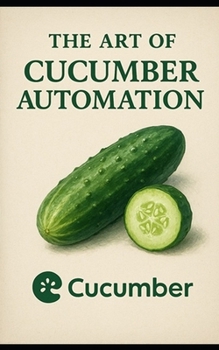The Art Of Cucumber Automation: An Insight Into Cucumber Automation
The Art of Cucumber Automation is a practical and conceptual guide to mastering behavior-driven development (BDD) using the Cucumber framework. Aimed at both novice and experienced testers and developers, the book offers a comprehensive journey through the world of test automation, focusing on collaboration, clarity, and quality assurance.
Introduction to BDD and Cucumber:
The book starts with a foundational understanding of Behavior-Driven Development (BDD) and how Cucumber fits into this development methodology. It emphasizes the importance of writing clear, human-readable tests using Gherkin syntax that bridges the communication gap between technical and non-technical stakeholders.
Writing Effective Gherkin Scenarios:
Readers learn how to craft meaningful and maintainable scenarios using the Given-When-Then structure. Best practices are shared for keeping scenarios concise, reusable, and focused on business behavior rather than implementation details.
Step Definitions and Code Integration:
The book delves into the mechanics of step definitions-how Gherkin steps are linked to executable code in languages like Java, Ruby, or JavaScript. It explores techniques to structure code for maintainability and test reusability.
Framework Design and Best Practices:
A significant portion is dedicated to designing a robust automation framework with Cucumber. It covers integrating Cucumber with tools such as Selenium WebDriver, TestNG/JUnit, and Maven/Gradle. Tips on handling data-driven testing, hooks, tagging, and parallel execution are also included.
CI/CD and Reporting:
The book guides readers on incorporating Cucumber tests into continuous integration/continuous deployment pipelines using tools like Jenkins, GitHub Actions, or GitLab CI. It also touches on generating and customizing reports using plugins like Cucumber HTML Reports and ExtentReports.





